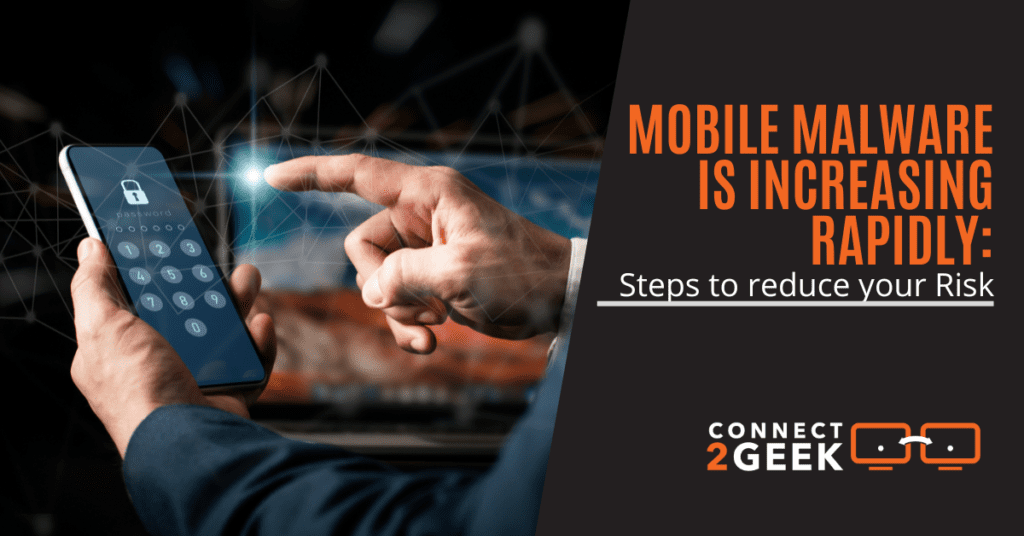
Malware can make everything about your device feel off. The random unwanted pop-ups, unauthorized charges on your accounts, overheating, frequent freezing, and crashing, frustrate users’ experience. More harm than this can be caused due to the increasing frequency of Mobile malware Attacks. Research showed a 500% increase in mobile Malware in 2022 and also an 80% increase in banking malware attacks on Android devices; this is high and calls for mobile defense.
Mobile Malware is malicious software that targets mobile devices like smartphones and tablets. The software consists of programs or files that are written to cause unwanted effects on any device that they succeed in infecting and to gain access to private data on the device.
The increase in the use of mobile gadgets and the high volume of people turning to their phones as a primary means of browsing, storing, and transmitting sensitive data simultaneously increases the number of gadgets prone to malware attacks. Hence the need for you as a mobile device user to know about device malware and how to reduce the risk and protect mobile devices.
Types of Malware
There are different types of Mobile device malware based on their form of attack, effect, installation, and distribution. Common mobile malware are explained below:
- Bank Trojans: The primary aim of this is to steal the banking details of users by remotely installing malicious software into devices
- Remote Access Tools (RATs): This allows access to information on the device such as call history, installed applications, web browsing history, address books, and SMS data.
- Ransomware: This malware denies users access to their devices while the attacker demands a ransom before granting the user access.
- Advertising Click Fraud: The attackers trick users or hijack their devices to generate income through fake ad clicks.
You may wonder, how does Malware get to your devices without your knowledge?
Through mobile phishing and spoofing. Cybercriminals collect valuable personal information; they send corrupted documents or links disguised as legitimate mail or news to devices. Immediately the users click the link or document, they will be directed to a fake website where they will enter their credentials. The malware can automatically install as they click.
Jailbreaking also increases the risk of attack on mobile devices. This refers to when users bypass the internal protection and control of the operating system. Users who jailbreak devices often do so to download third-party applications that are not approved by the operating system.
Reducing the Risk of Mobile Malware Attacks
Find out how you can protect your devices and reduce the risk of malware attacks on them.
Be Aware of the Latest Mobile Threats:
It is essential to know what you are fighting or protecting your device against. Being aware of the latest threats helps you understand the preventive measure to take and if you have been attacked, it helps you to know how to repair and regain your device.
There are different types of malware and other approaches to attacking your devices. You might have prior knowledge of some, but there are new and updated ones that you need to know. It may take time to grasp the instructions and a little more effort to follow them, but these are worth the work since protecting your phone is crucial.
Download Anti-malware for Your Mobile Device:
Sometimes, downloading malicious folders or apps may happen unconsciously. Mobile anti-malware should be installed to prevent harm as it can prevent infection. Anti-malware detects and protects your device against viruses, malware, and other damaging software, blocks hacking attempts, and provides approaches to securing your mobile devices.
Avoid Third-party Apps:
Third-party apps are applications provided by vendors other than the device’s original manufacturer. The applications, however useful, pose a high risk for your gadgets as Viruses and Malware may be packaged in them. For safety, you should install applications from your gadget developer’s store (Google Play store, Apple store, Windows phone store).
If you decide to download third-party apps, ensure you carry out thorough research to ensure the app you are downloading is not malicious. Ensure you read reviews, and if the app asks for access to too much personal data upfront, do not download it
Do Not Click Links from Unknown Sources:
It is impossible to stop receiving unknown links, sometimes, they pop up when you are browsing, and sometimes they are sent to you by family and friends who also did not confirm the source. Do not click, no matter the application it uses.
Multi-factor Authentication:
MFA effectively reduces the risk of Cyber attackers taking over mobile devices or accounts and provides additional security for users. Multi-factor authentication is an approach that secures applications and devices where a system requires the user to present a combination of two or more credentials to authenticate a user’s identity for login. Doing this will notify the user about any intrusion and enable them to block access immediately.
Consult IT Professional
You need to seek professional services, for more knowledge and help in case your devices get infected.
Are You Ready to Prevent Mobile Malware from Taking Over Your Device?
Contact us at Connect2Geek if you need assistance with cybersecurity, training, mobile malware prevention, or data recovery. Feel free to reach out to us if you need a specialist with the required experience to put you on the right track! For more information, call 208-468-4323 or reach us online.
